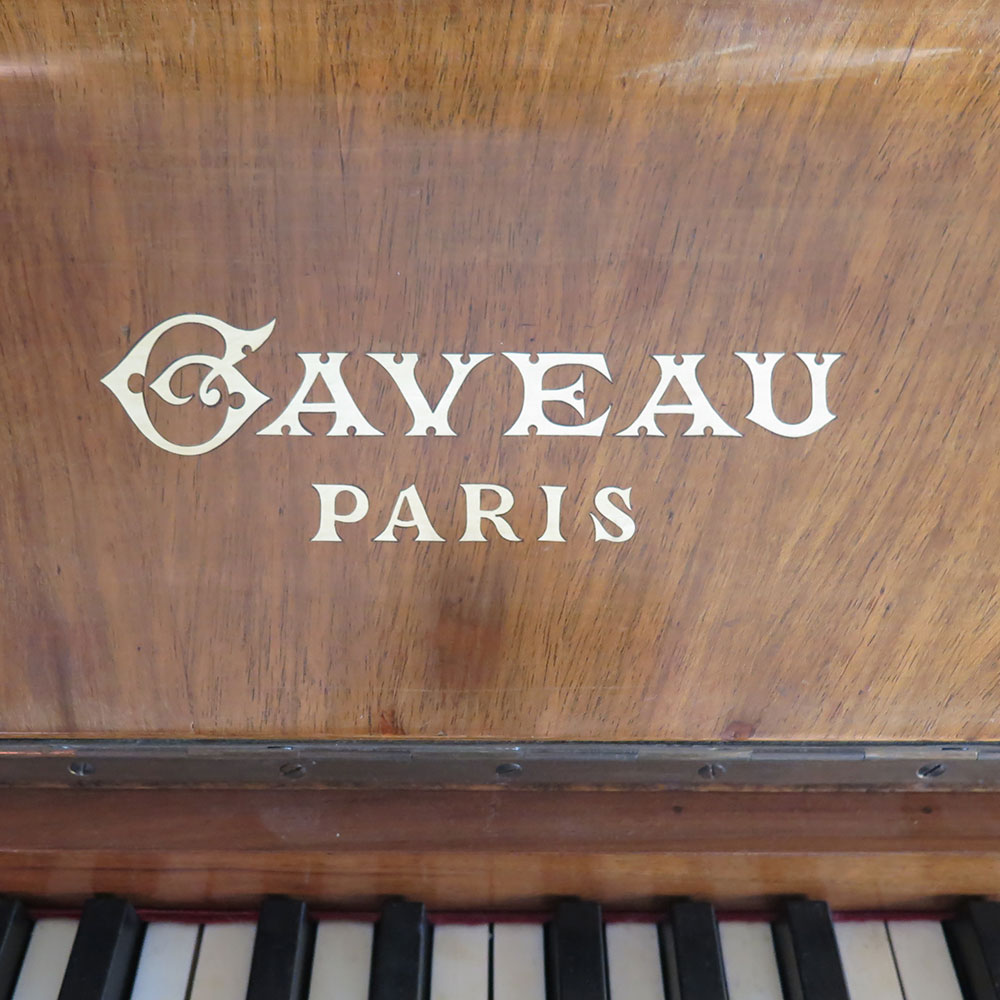Gaveau
Paris, France
"Joseph Gabriel Gaveau was born in 1824 in Romorantin between Loir and Cher.
He established his workshop in Paris, rue des vinaigriers, in 1847 after having been an apprentice in several Parisian workshops. From the very beginning, he was committed to making excellent solid upright pianos, imitating Erard’s design while working on the development of upright piano actions, in particular the angle of escapement. He created a action to meet his requirements, which would soon become known as the “Gaveau action”.
The growing reputation of his pianos allowed him to build a small factory on rue Sevran, where he employed 200 people in around 1890 and produced 1500 pianos a year.
In 1893, feeling his old age as he approached 70, he passed the management of his company to his sons Gabriel Eugène and Etienne. The company became “Société Gaveau”. From 1896 onwards they developed the brand by opening a new, more modern factory in Fontenay Sous Bois near Paris. It employed 300 workers and could produce 2,000 pianos a year. It was in this factory that most of the qualified piano makers in Paris would be trained. Etienne Gaveau took charge of management, and set up the company headquarters in the heart of Paris, rue de la Boétie, building a large concert hall there in 1908 to promote the quality of their pianos: the famous “Salle Gaveau”.
Gaveau’s reputation owed much to the concerts wisely organised by Etienne in their up-to-date concert hall. The most famous pianists were invited to play on the company’s instruments, especially their famous concert pianos.
The small “model 1” quarter grand, well-known in Paris, provided stiff competition for Pleyel and Erard pianos for the Parisian home market. Inlaid sun designs and beautiful exteriors added to the maker’s growing reputation.
In 1911, the brothers argued and Gabriel founded his own premises where he was free to explore his new ideas for making grand pianos. He created his own style, making quarter grands with elaborate exteriors using precious woods.
Around 1930, a subsidiary brand was created: M.A.G. (Marcel et André Gaveau) which made small solid upright pianos, with modest prices.
War broke out in 1939, just as the company produced its 95,000th piano.
Etienne died in 1943, and his sons Marcel and André continued on despite various problems.
In 1960, the company merged with Erard, becoming “Société Gaveau-Erard”, and then Pleyel joined, also in decline, creating “Les Grandes Marques Reunies” but 1965 brought liquidation and the final closure of the factories."




